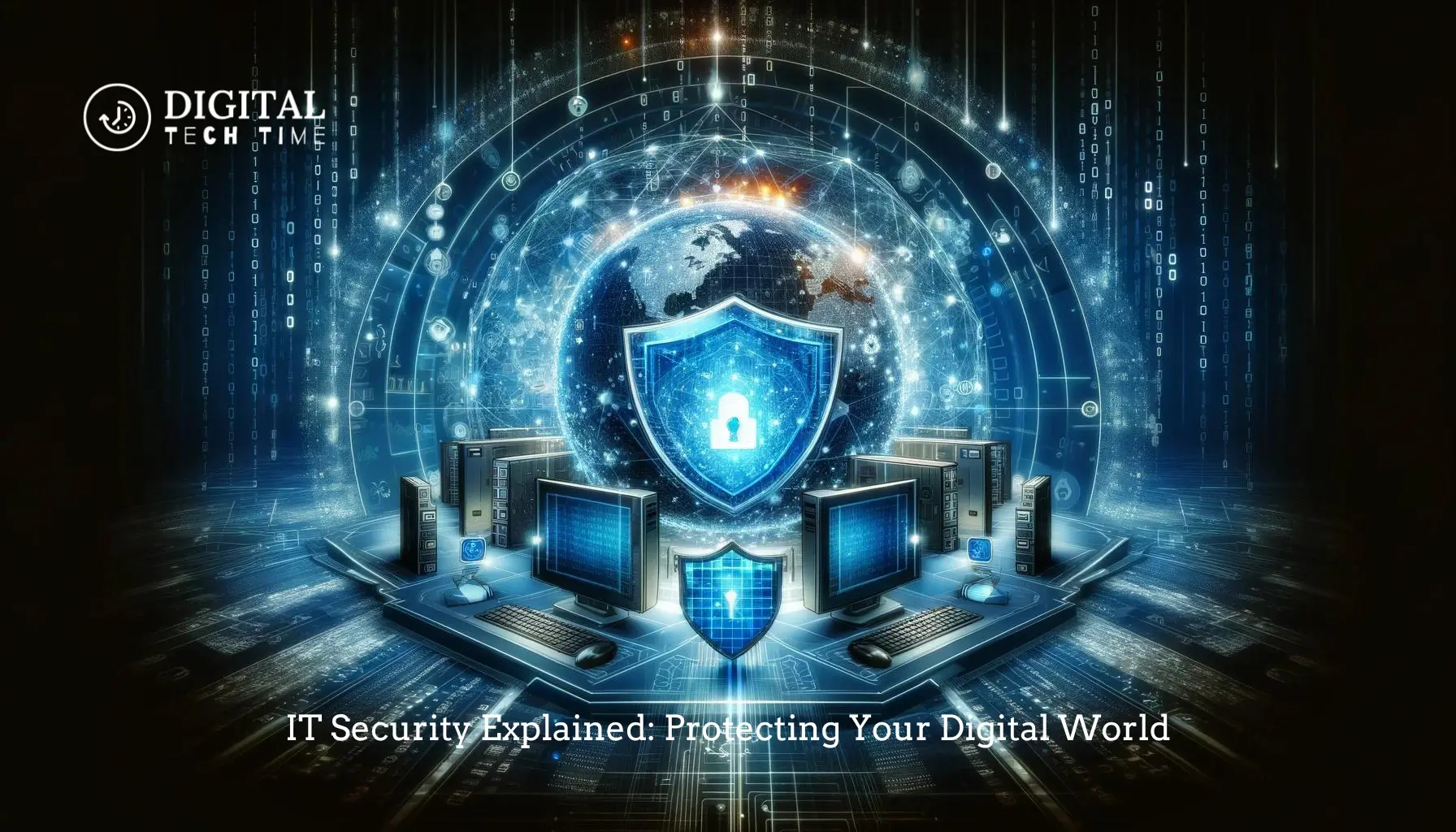Decoding IT Security: A Comprehensive Guide
IT security is, hence, critical in protecting organizations’ digital assets from cyber threats in this age. It implies various strategies and technologies designed for safeguarding sensitive data, securing access to systems, and ensuring the availability of uninterrupted networks. This exposes an in-depth view of IT security, explaining why it’s important, the types of security threats, and best practices for keeping your digital world safe.
Table of Contents
Understanding IT Security
This refers to IT asset protection within an organization. The assets within an organizational setting range from computers, peripherals, networks, digital devices, data, and many more from unauthorized access. It mainly offers protection against the cyber world attacks launched by the misuse of information or information systems. The main goal of IT security is to assure the confidentiality, integrity, and availability—also called the CIA triad—of the digital information and associated equipment.

Types of IT Security
- Identity Security Methods and mechanisms for the identification, verification, and authorization of machines, devices, users and applications.
- It’s crucial to ensure that IAM is the gateway to accessing sensitive information, underscoring the responsibility and vigilance required in managing this access.
- Network Security Protection of on-premise networks, WAN and the Internet from unwanted access and detection of cyber threats
- Our approach to network security is comprehensive, encompassing network segmentation, secure transport, access control, and content inspection.
- Cloud Security Security of the cloud-based infrastructure, applications, and data from outside and inside cyber threats.
- Solves security in IaaS, PaaS, and SaaS to secure cloud environments.
- Endpoint Security It is all about protecting the end-user devices, including desktops, laptops, mobile, and IoT devices from various cyber threats. This comprises device compliance, threat prevention, endpoint detection, and response capabilities for endpoints.
- Application and API Security This makes sure that applications are secure and APIs are safe by code review and runtime analysis for vulnerability eradication.
- It’s empowering to know that application and API security is integrated into CI/CD pipelines as part of proactive Shift Left Security and DevSecOps initiatives, putting you in control of your security measures.
- Management: Extensive deployment and management of security solutions to make sure that IT assets are properly protected.
- Configuration, monitoring, optimization, and automation are done with devices, and orchestration is configured for better security.
- Our security measures are proactive, ensuring Detailed visibility over network activities, effective threat data ingestion, and a swift response to cyber threats.
- Forensic analysis, threat hunting, and threat mitigation to reduce the impact of security incidents are included.
Common Threats to IT Security
- Examples are network-based attacks, such as malware infections in vulnerable systems.
- Account Takeover Attackers may attempt to steal the credentials through phishing and social engineering attacks to compromise the system.
- We carried out to steal sensitive data, fraudulent activities, and follow-up cyber attacks.
- Financially Motivated Attacks Cybercrime activities, including ransomware, data exfiltration, and DoS attacks, are carried out for financial gain.
- Target organization’s critical assets and demand ransom payments or extort money upon the threat of cyber.
- APTs: Being backed by nation-state roots and organized crime groups, APTs are advanced and sophisticated threat actors who generate directed attacks.
- Exploit the vulnerabilities in the supply chain and undertake long-term espionage to steal sensitive information.
- Poor security practices: Laxity in security configurations, weak access controls, and use of default credentials expose IT assets to Cyber Threats.
- The vulnerability is common to both on-premise and cloud-based, leading to data breaches and leakages.

Best Practices for IT Security
- Implement Least Privilege Access: Set up RBAC with the least privilege access to lock down what users can do.
- Multi-factor authentication strengthens user authentication and offers resilience against any unauthorized access.
- Keep Software and Systems Up-to-Date: Regularly apply security patches and updates to known vulnerabilities in software and systems to reduce security risk exposure.
- Automate A patch management tool will automate the process of updating and ensure updates occur in a timely fashion.
- Train employees on security awareness. Provide appropriate training on security awareness and recognizing and reporting cyber threats to all staff.
- Educate users about phishing and other social engineering attacks and publish best practices for protecting data.
- Implement Endpoint Protection: Protect endpoints from malware, ransomware, and other cyber-attacks with endpoint security products.
- Implement device encryption, data loss prevention, and mobile device management to cover protection from all perspectives.
- Monitor and Analyze Network Traffic: Use network security tools to monitor and analyze network traffic to detect suspicious activity.
- Run intrusion detection and prevention systems to check and block malicious traffic in real time.

FAQs about IT Security
Q: What are the three basics of IT security?
A: Three basic security concepts important to information on the internet are confidentiality, integrity, and availability. Concepts relating to the people who use that information are authentication, authorization, and nonrepudiation.
Q: What is security in it?
A: IT security is a set of cybersecurity strategies that prevents unauthorized access to organizational assets such as computers, networks, and data. It maintains the integrity and confidentiality of sensitive information,
Q: What is the aim of security?
A: Overview of goals of security: Confidentiality, Integrity, and Availability.
Conclusion
In conclusion, IT security is critical in protecting organizations’ digital assets from cyber threats in today’s interconnected world. Organizations can safeguard their digital future and ensure business continuity by understanding the importance of IT security, implementing best practices, and staying vigilant against evolving cyber threats. Remember, investing in IT security is not just a measure of protection but a strategic investment in the resilience and success of your organization in the
Related Artical







